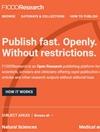Quantitative assessment of the lipiodol staining after transarterial chemoembolization for hepatocellular carcinoma: can it predict tumor recurrence?
Q2 Pharmacology, Toxicology and Pharmaceutics
引用次数: 0
Abstract
Background The degree of intratumoral lipiodol staining after conventional transarterial chemoembolization (cTACE) has the potential to predict tumor responses and disease prognosis. This study is aimed at evaluating the correlation between the lipiodol retention of the tumor with a complete response after cTACE and tumor recurrence by quantitative assessment. Methods From January 2013 to September 2023, every patient receiving cTACE for HCC was recognized. Inclusion criteria were patients with ≤6 HCCs and sizes 1-6 cm, with at least one tumor obtaining a complete response after cTACE, and available baseline and follow-up CT studies. Tumoral, cTACE procedural, and lipiodol staining parameters were analyzed. Using univariate and multivariate analysis, significant factors associated with tumor recurrence were identified. ROC curve analysis was used to identify the optimal cutoff point for the statistically significant factors, predicting tumor recurrence. Results The final population included 39 patients with 63 HCCs. Tumor recurrence was detected in 18/63 (28.6%) at a mean of 27.8 months. On univariate analysis, the incidence of tumor recurrence significantly increased with increased tumor size (p = 0.007), an inhomogeneous lipiodol staining pattern (p<0.001), a low minimum lipiodol radiodensity (p = 0.012), and a high lipiodol washout rate (p = 0.046). On multivariate analysis, an inhomogeneous lipiodol staining pattern (p<0.001) and a high lipiodol washout rate (p = 0.012) were significant predictors for tumor recurrence. On ROC analysis, a lipiodol washout rate of greater than 6.44 HU/month was related to tumor recurrence (sensitivity 83%, specificity 51%). Conclusions Inhomogeneous lipiodol staining pattern and lipiodol washout rate of >6.44 HU/month were predictors for recurrence of HCC after a complete response after cTACE. These correlations may provide useful guidance for subsequent imaging surveillance and treatment approaches.肝细胞癌经动脉化疗栓塞术后脂碘染色的定量评估:它能预测肿瘤复发吗?
背景 传统经动脉化疗栓塞术(cTACE)后瘤内脂碘醇染色程度可预测肿瘤反应和疾病预后。本研究旨在通过定量评估肿瘤内脂碘醇滞留与 cTACE 完全反应和肿瘤复发之间的相关性。方法 自 2013 年 1 月至 2023 年 9 月,对所有接受 cTACE 治疗的 HCC 患者进行识别。纳入标准为 HCC≤6 个且大小为 1-6 厘米的患者,至少有一个肿瘤在 cTACE 后获得完全应答,且有可用的基线和随访 CT 检查。对肿瘤、cTACE 程序和脂碘染色参数进行了分析。通过单变量和多变量分析,确定了与肿瘤复发相关的重要因素。通过 ROC 曲线分析,确定了预测肿瘤复发的有统计学意义因素的最佳临界点。结果 最终研究对象包括 39 名患者,63 例 HCC。平均 27.8 个月后,63 例患者中有 18 例(28.6%)发现肿瘤复发。单变量分析显示,肿瘤复发的发生率随肿瘤大小的增加而显著增加(p = 0.007),不均匀的脂碘染色模式(p6.44 HU/月)是预测 cTACE 完全反应后 HCC 复发的因素。这些相关性可为后续的成像监测和治疗方法提供有用的指导。
本文章由计算机程序翻译,如有差异,请以英文原文为准。
求助全文
约1分钟内获得全文
求助全文
来源期刊

F1000Research
Pharmacology, Toxicology and Pharmaceutics-Pharmacology, Toxicology and Pharmaceutics (all)
CiteScore
5.00
自引率
0.00%
发文量
1646
审稿时长
1 weeks
期刊介绍:
F1000Research publishes articles and other research outputs reporting basic scientific, scholarly, translational and clinical research across the physical and life sciences, engineering, medicine, social sciences and humanities. F1000Research is a scholarly publication platform set up for the scientific, scholarly and medical research community; each article has at least one author who is a qualified researcher, scholar or clinician actively working in their speciality and who has made a key contribution to the article. Articles must be original (not duplications). All research is suitable irrespective of the perceived level of interest or novelty; we welcome confirmatory and negative results, as well as null studies. F1000Research publishes different type of research, including clinical trials, systematic reviews, software tools, method articles, and many others. Reviews and Opinion articles providing a balanced and comprehensive overview of the latest discoveries in a particular field, or presenting a personal perspective on recent developments, are also welcome. See the full list of article types we accept for more information.
 求助内容:
求助内容: 应助结果提醒方式:
应助结果提醒方式:


